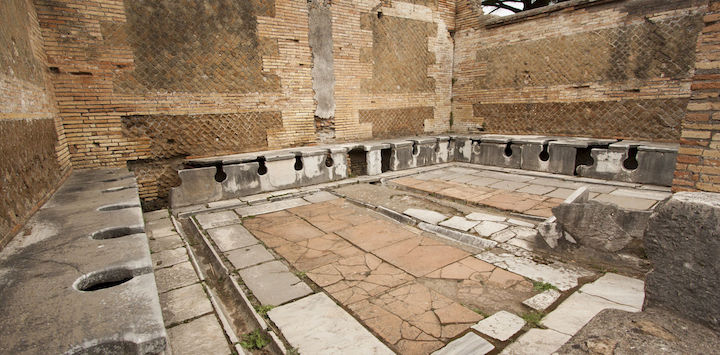
Waste does not exist in nature — all materials are part of a cycle of use and reuse. When a plant or animal expires, every part of it goes back to nourish something else. In short, there is no such thing as a worthless material in nature — there is no such thing as waste.
The concept of waste is something created by humans to describe the items we create but no longer need and discard. Merriam-Webster defines waste as “refuse from places of human or animal habitation.” The World Book Dictionary defines waste as “useless or worthless material; stuff to be thrown away.”
While it’s safe to say that waste has existed as long as humans have, it’s impossible to pinpoint when the first piece of litter hit the ground. But throughout history we can look back at how waste was generated and handled across cultures and societies all the way up to the present.
Waste management in Ancient Rome
Ancient Rome developed one of the earliest waste management systems to handle one of its most pressing waste challenges: human waste. First introduced between 800 and 735 BC, the Romans had a complex system of sewers covered by stones — which were much like modern sewers. Waste flushed from the latrines flowed through a central channel into the main sewage system and thence into a nearby river or stream.
Due to the fact that it was common for Romans to throw waste out of windows into the streets, a law eventually was passed to protect innocent bystanders from assault by wastes thrown into the street. The violator was forced to pay damages to whomever his or her waste hit, if that person sustained an injury.
Managing waste in the Middle Ages
During the Middle Ages, while many of the waste management innovations of Ancient Rome had been lost, people still understood the value of reduced waste on their streets. Just as with Ancient Rome, human waste was a major cause of concern. Although people didn’t understand exactly how human waste could spread disease, they knew it did and thought it had something to do with its odors.
To address waste problems, many medieval towns and cities established ordinances and laws regulating waste disposal, latrines and toilets. In medieval London, for example, people were responsible for the upkeep and cleanliness of the street outside their houses — and faced stiff fines if they didn’t. One historical account speaks of an outraged mob badly beating a stranger who littered their street with the skin of a smoked fish, since they didn’t want to have to pay the heavy fine for his laziness. Perhaps this was when the concept of food waste first took hold.
Waste in the Industrial Age
The origins of the modern Municipal Solid Waste (MSW) management system can be traced to the urbanization which occurred as a result of the Industrial Revolution. Crowding in industrial cities gave rise to near-constant epidemics of contagious disease. And fear of these epidemics created political support for public investment in municipal sanitation infrastructure — first to provide clean water and sewerage and later, at the beginning of the 20th Century, to provide for the collection and disposal of municipal refuse.
The biggest change in the 20th century was the dramatic rise of product wastes. With the advent of modern consumerism following the Second World War, product waste created a slew of challenges for the MSW management system. Industrial waste, for example, produced hazardous substances that could not be safely or easily disposed of. It was during this time that polluted, overflowing municipal landfills began to be perceived by the public as a “crisis.”
With the rise of industrial-scale agriculture in the United States, food waste also emerged as a serious issue. While for most of human history, food production was costly and intensive, more food than ever before now was being produced — and thus wasted.
Rethinking waste for the future
Beginning in the 1980s, local governments in the U.S. began ramping up public investments in collection programs for collecting recyclables, which were meant to reduce the flow of waste to landfills and incinerators. While most Americans now have access to some sort of recycling program, the rules, practices and community norms around recycling vary considerably from place to place, contributing to dramatically different local recycling levels, according to Pew. People who live in places where social norms strongly encourage recycling are more likely to be aware of recycling rules, say they have more options for recycling and see more of the waste they generate being recycled rather than landfilled.
But with landfills already overflowing and creating countless social and environmental problems — such as contributing to climate change — it is becoming more clear than ever that we need to rethink waste altogether. That’s why we at Nourished Planet are committed to creating the highest possible economic and social value from food and beverage waste. Rather than think of waste as waste, we are determined to finding innovative ways to turn it into resources — just as nature intended.

